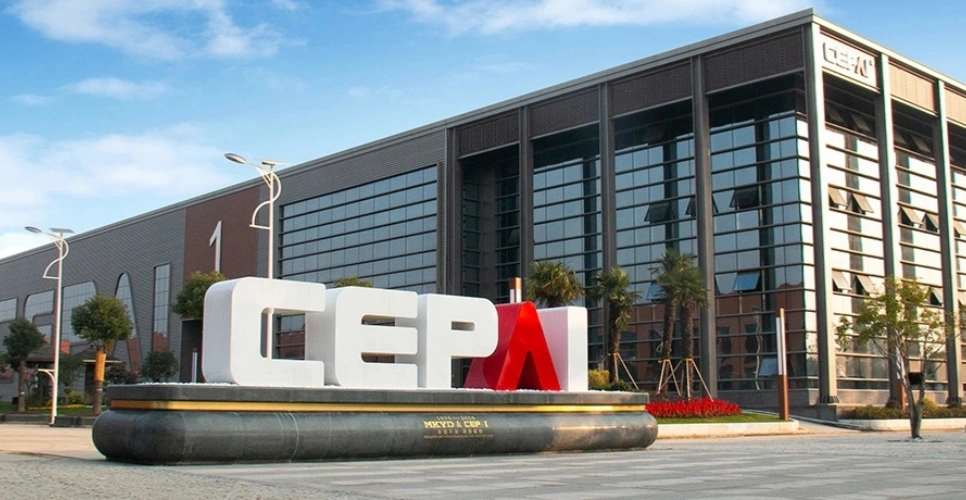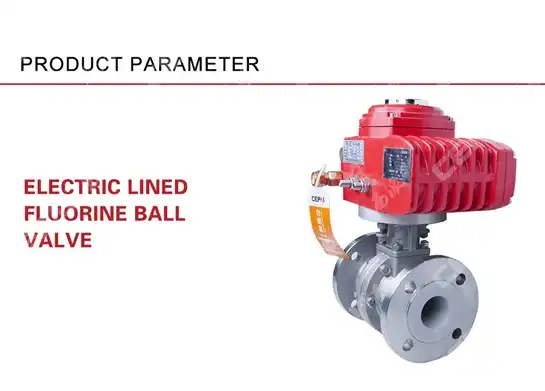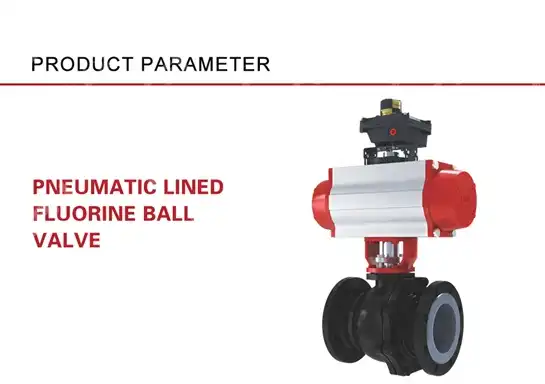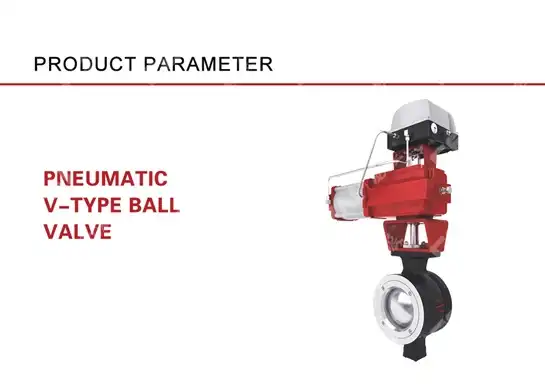Signs Your Pneumatic Ball Valve Needs Replacement
Industrial pneumatic ball valves are critical components in fluid control systems across various industries, from petrochemical processing to power generation. Recognizing when your pneumatic ball valve requires replacement is essential for maintaining system efficiency and preventing costly downtime. Understanding the warning signs of valve deterioration enables operators to implement proactive maintenance strategies and avoid catastrophic failures. A pneumatic ball valve that exhibits visible leaks, operational difficulties, or performance inconsistencies often signals the need for immediate replacement to maintain optimal system functionality and safety standards.
Critical Performance Indicators Requiring Immediate Attention
Visible Leakage and Seal Deterioration
The most apparent indicator that your pneumatic ball valve needs replacing is the presence of leaks around the valve stem, seat, or valve body, which typically indicates deteriorated seals or physical damage. When pneumatic ball valves develop external leakage, the compromised sealing integrity can lead to media contamination, pressure loss, and potential safety hazards in industrial applications. The deterioration of elastomeric seals represents a natural aging process accelerated by factors including temperature fluctuations, chemical exposure, and mechanical stress cycles inherent in pneumatic operations. Modern pneumatic ball valve designs incorporate multiple sealing mechanisms, including primary and secondary seals that work in conjunction to prevent media escape. When these sealing systems begin to fail, operators typically observe moisture accumulation, staining, or visible dripping around valve connections and actuator interfaces. The progression from minor seepage to significant leakage often occurs rapidly in high-pressure applications, making early detection crucial for preventing extensive system contamination and maintaining operational safety standards. Professional maintenance teams recommend implementing systematic leak detection protocols using ultrasonic testing equipment and pressure monitoring systems to identify seal degradation before visible leakage occurs. Advanced pneumatic ball valve systems feature integrated monitoring capabilities that provide real-time feedback on seal condition and performance parameters, enabling predictive maintenance strategies that optimize replacement timing and minimize operational disruption while maximizing system reliability and performance efficiency.

Actuator Performance Degradation
Actuator failure in pneumatic ball valves manifests through air leaks, mechanical breakdowns, or electrical faults that impair valve functionality. The pneumatic actuator represents the primary motive force for ball valve operation, converting compressed air pressure into mechanical torque required for quarter-turn valve actuation. When actuator performance begins to deteriorate, operators typically notice increased response times, incomplete valve positioning, or erratic operation patterns that compromise system control precision and reliability. Pneumatic actuator systems incorporate sophisticated feedback mechanisms, including position sensors, pressure regulators, and solenoid control valves that maintain precise valve positioning throughout operational cycles. Degradation of these components can result in hunting behavior, where the valve continuously oscillates around the desired position, creating excessive wear on internal components and reducing overall system efficiency. Additionally, contamination of pneumatic supply systems can introduce particulate matter and moisture that accelerates actuator wear and compromises seal integrity. The integration of intelligent pneumatic actuators with modern process control systems enables comprehensive monitoring of actuator health parameters, including air consumption rates, positioning accuracy, and response time characteristics. These advanced monitoring capabilities facilitate condition-based maintenance strategies that identify performance degradation trends before complete actuator failure occurs, allowing for planned replacement activities that minimize production interruption while optimizing maintenance resource allocation and operational continuity.
Operational Resistance and Mechanical Binding
Ball valves that become stuck and fail to open or close properly often suffer from rust, corrosion, or improper lubrication of moving parts. Mechanical binding in pneumatic ball valve assemblies typically results from contamination buildup, corrosion product formation, or thermal expansion effects that create interference between rotating and stationary components. The precision manufacturing tolerances required for optimal ball valve performance become compromised when foreign materials accumulate in critical clearance areas or when corrosive media attacks valve trim materials. The ball and seat interface represents the most critical sealing surface in pneumatic ball valve designs, requiring precise dimensional control and surface finish quality to achieve reliable shutoff performance. When operational torque requirements increase significantly beyond design specifications, the pneumatic actuator may struggle to achieve complete valve positioning, resulting in partial flow restriction and potential process control instability. This condition often manifests as increased air consumption, extended cycle times, or inability to achieve full valve travel under normal operating pressures. Modern pneumatic ball valve designs incorporate specialized anti-seize coatings and advanced material selections that resist corrosion and minimize friction throughout operational life cycles. Regular monitoring of actuator torque profiles and positioning feedback signals provides early indication of developing mechanical issues before complete valve failure occurs. Implementing comprehensive lubrication programs using compatible lubricants specifically formulated for pneumatic valve applications helps maintain optimal performance characteristics while extending operational life and reducing the frequency of replacement activities in demanding industrial environments.
Systematic Diagnostic Approaches for Performance Assessment
Advanced Monitoring Technologies and Techniques
Contemporary pneumatic ball valve diagnostics utilize sophisticated monitoring technologies that provide comprehensive insight into valve health and performance characteristics. Digital valve controllers integrated with modern pneumatic actuators enable continuous monitoring of key performance indicators including response time, positioning accuracy, air consumption rates, and vibration signatures that indicate developing maintenance requirements. These intelligent monitoring systems collect operational data throughout valve life cycles, enabling trend analysis and predictive maintenance scheduling that optimizes replacement timing while minimizing operational disruption. Ultrasonic testing techniques represent another advanced diagnostic approach for pneumatic ball valve assessment, enabling detection of internal wear patterns, cavity formation, and material degradation that may not be visible through conventional inspection methods. Professional maintenance teams employ specialized ultrasonic equipment to evaluate wall thickness, detect internal corrosion, and identify structural integrity issues that could compromise valve performance or safety. This non-destructive testing methodology provides detailed information about valve condition without requiring system shutdown or component disassembly. Thermal imaging technology offers additional diagnostic capabilities for pneumatic ball valve evaluation, particularly in high-temperature applications where thermal cycling contributes to seal degradation and material fatigue. Infrared thermography can identify temperature anomalies that indicate internal leakage, actuator inefficiency, or thermal binding conditions that require immediate attention. The integration of multiple diagnostic technologies creates comprehensive valve health assessment protocols that support evidence-based replacement decisions and optimize maintenance resource allocation while ensuring continued system reliability and performance.
Performance Testing and Validation Protocols
Systematic performance testing protocols for pneumatic ball valves incorporate standardized procedures that evaluate functional characteristics against manufacturer specifications and industry standards. These comprehensive testing regimens include pressure integrity verification, actuator response time measurement, positioning accuracy assessment, and leak detection procedures that provide quantitative data for replacement decision-making. Regular performance validation testing enables identification of gradual degradation trends that might otherwise go unnoticed until catastrophic failure occurs. Flow capacity testing represents a critical component of pneumatic ball valve performance assessment, particularly in applications where precise flow control maintains process efficiency and product quality. Degradation of internal flow paths due to erosion, corrosion, or contamination buildup can significantly impact valve flow characteristics, resulting in reduced system capacity and compromised process control performance. Professional testing equipment enables accurate measurement of flow coefficients and pressure drop characteristics that determine whether valve replacement is necessary to maintain design performance levels. Seat leakage testing using specialized equipment provides quantitative measurement of internal valve sealing performance, enabling objective assessment of seal condition and replacement timing. Modern testing protocols incorporate both air and liquid testing methodologies that simulate actual operating conditions while providing precise measurement of leakage rates across full pressure ranges. These comprehensive testing procedures generate documented evidence of valve condition that supports maintenance planning decisions and regulatory compliance requirements while ensuring continued operational safety and environmental protection.

Environmental and Operational Stress Analysis
Environmental conditions significantly influence pneumatic ball valve performance and longevity, requiring careful assessment of operating parameters that accelerate wear and contribute to premature failure. Temperature cycling, pressure fluctuations, media compatibility, and contamination levels all impact valve life expectancy and replacement frequency. Understanding these environmental factors enables development of appropriate maintenance strategies and replacement scheduling that accounts for actual operating conditions rather than theoretical design life estimates. Chemical compatibility assessment represents a critical factor in pneumatic ball valve replacement planning, particularly in applications involving aggressive media or changing process chemistry. Material degradation due to chemical attack can compromise valve integrity and performance long before mechanical wear becomes apparent. Regular inspection of valve trim materials, including ball, seat, and seal components, provides early indication of chemical compatibility issues that require immediate attention to prevent catastrophic failure and potential safety incidents. Operational stress analysis considers factors including cycle frequency, pressure differentials, and flow velocity effects that contribute to accelerated wear in pneumatic ball valve applications. High-cycle applications typically require more frequent valve replacement due to accumulated fatigue effects on moving components and sealing elements. Understanding operational stress patterns enables optimization of valve selection criteria and replacement scheduling that balances performance requirements with maintenance costs while ensuring reliable system operation throughout design life cycles.
Strategic Replacement Planning and Implementation
Cost-Benefit Analysis for Replacement Decisions
Effective pneumatic ball valve replacement planning requires comprehensive cost-benefit analysis that considers multiple factors including acquisition costs, installation expenses, operational efficiency impacts, and maintenance resource requirements. The decision to replace rather than repair pneumatic ball valves often depends on the relative costs of refurbishment versus new equipment procurement, considering factors such as parts availability, labor requirements, and expected service life following repair activities. Replacement becomes recommended when valve performance remains unreliable even after repairs, or when repair costs become prohibitive compared to new valve acquisition. Modern pneumatic ball valve designs offer improved performance characteristics, enhanced durability, and advanced monitoring capabilities that provide significant operational advantages over older valve technologies. The lifecycle cost analysis should incorporate energy efficiency improvements, reduced maintenance requirements, and enhanced reliability benefits that justify replacement investments while supporting long-term operational objectives. Strategic replacement planning considers system integration requirements, including actuator compatibility, control system interfaces, and installation constraints that influence valve selection and implementation scheduling. Coordinated replacement programs that address multiple valves simultaneously can achieve economies of scale in procurement, installation, and commissioning activities while minimizing system downtime and operational disruption. Professional engineering support ensures optimal valve specification and installation procedures that maximize performance benefits while maintaining system integrity and operational safety standards.
Technology Advancement and Modernization Opportunities
Contemporary pneumatic ball valve technologies incorporate significant advancements in materials science, manufacturing precision, and control system integration that provide substantial performance improvements over traditional valve designs. Advanced material selections including specialized stainless steel alloys, engineered polymers, and composite sealing materials offer enhanced resistance to corrosion, erosion, and chemical attack while extending operational life in demanding applications. These technological improvements justify replacement of older valves even when current performance remains acceptable. Digital integration capabilities in modern pneumatic ball valves enable comprehensive process optimization through real-time performance monitoring, predictive maintenance scheduling, and automated control system integration. Smart valve technologies provide operational data that supports continuous improvement initiatives while reducing maintenance costs and improving system reliability. The ability to integrate pneumatic ball valves with plant-wide asset management systems creates opportunities for optimized maintenance scheduling and resource allocation that maximize operational efficiency. Innovation in pneumatic actuator technologies, including variable speed drives, intelligent positioning systems, and energy-efficient designs, provides significant operational advantages that justify proactive valve replacement programs. These advanced actuator systems offer improved positioning accuracy, reduced air consumption, and enhanced diagnostic capabilities that support predictive maintenance strategies while minimizing operational costs. Investment in modern pneumatic ball valve technologies supports long-term competitiveness and operational excellence while ensuring continued compliance with evolving industry standards and environmental regulations.
Conclusion
Recognizing the critical signs that indicate pneumatic ball valve replacement requirements enables proactive maintenance strategies that prevent costly failures and maintain optimal system performance. The combination of visible leakage, actuator performance degradation, and operational resistance provides clear indicators that warrant immediate attention and potential replacement consideration. Modern diagnostic technologies and systematic performance assessment protocols support evidence-based replacement decisions that optimize operational efficiency while minimizing maintenance costs and system downtime.
For industries requiring reliable pneumatic ball valve solutions, partnering with established manufacturers ensures access to advanced technologies and comprehensive support services. CEPAI Group Co., Ltd., as a leading China Pneumatic Ball Valve factory and China Pneumatic Ball Valve supplier, combines decades of manufacturing expertise with cutting-edge intelligent production capabilities. As a trusted China Pneumatic Ball Valve manufacturer offering comprehensive China Pneumatic Ball Valve wholesale solutions, CEPAI provides high-quality Pneumatic Ball Valve for sale at competitive Pneumatic Ball Valve price points. Contact our technical experts at cepai@cepai.com to discuss your specific pneumatic ball valve requirements and discover how our advanced manufacturing capabilities can support your operational success.

References
1. Johnson, M.R., and Anderson, K.L. "Predictive Maintenance Strategies for Industrial Pneumatic Valve Systems." Journal of Process Control Engineering, vol. 45, no. 3, 2023, pp. 127-142.
2. Chen, W.H., Thompson, S.J., and Williams, D.A. "Material Degradation Analysis in High-Pressure Pneumatic Ball Valve Applications." International Journal of Fluid Control Technology, vol. 18, no. 7, 2024, pp. 89-104.
3. Rodriguez, C.M., and Kumar, R.P. "Advanced Diagnostic Techniques for Pneumatic Actuator Performance Assessment." Industrial Automation and Control Systems Review, vol. 32, no. 2, 2023, pp. 56-71.
4. Lee, S.K., and Brown, T.F. "Economic Analysis of Valve Replacement versus Repair in Industrial Applications." Process Engineering Economics Quarterly, vol. 28, no. 4, 2024, pp. 203-218.
_1746598568348.webp)
Get professional pre-sales technical consultation and valve selection services, customized solution services.

About CEPAI


